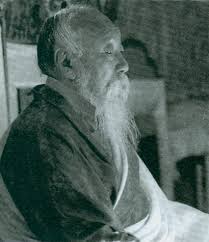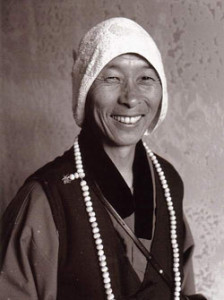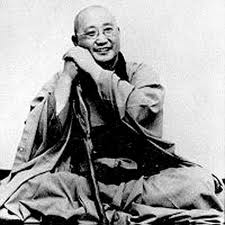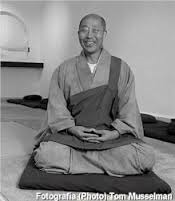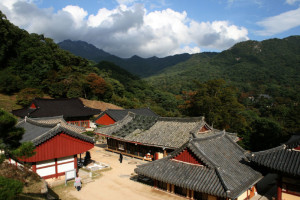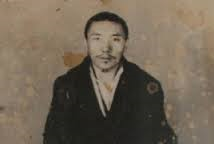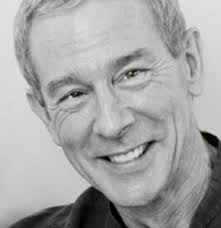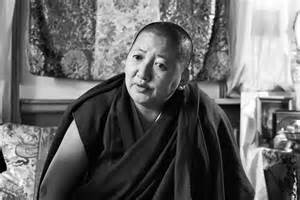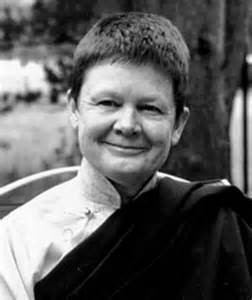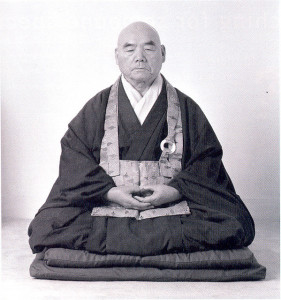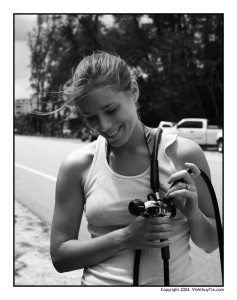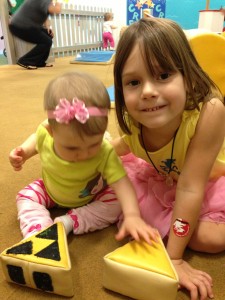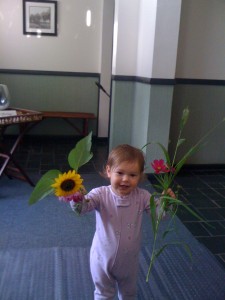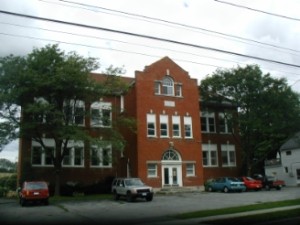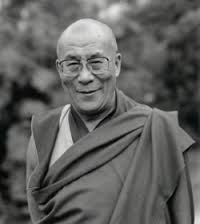Ven. BupSahng Chapl.,
My birth name Vaughn my mother was my first spiritual teacher. She taught me kindness in action, helping all she met without thinking of herself. She was very resilient like many of my ancestors. My father taught me business savvy and my grandparents taught me patience, on which I still am working in this moment.
George Gillette, also know as Talking Bear has Two Eagles, is a Blackfoot Indian and a medicine man for several Californian Indian Tribes who has the ability to see beyond time. He has authored countless books as well as taught me the way of the Great Spirit, and various healing modalities.
During my early practice when I attempted to speed up my karma, I struggled with my mind and bad spirits. This is when I met my second teacher, a Hungarian medum who showed me the way of the astral planes and how to travel. She was also able to commune with powerful beings on the other side. I am indebted to her for helping me free myself from many lives of karmic deeds.
Continuing my tireless practice, I experienced my first lasting Kensho, or deep insight to everything, in 1993 during a couple years of disciplined meditation practice and Master Reiki training. Empowerments were given to me from the Japanese Tantric sect, which led to an opening my sushumna or central channel. I was influenced by teachers like Chagdud Tulku Rinpoche with his detailed teachings, and Kusan Sunim while living in Los Angeles. However, this amazing feeling of oneness was like a drug and I became attached to this state of mind, trying to hold on to the ecstasy. This too created great suffering for me and lead to a unending search for a teacher that could help me maintain this deep opening of heart and mind while living in a busy world of demands and external stimulus. However, many of the teachers I encountered there were language barriers. I had to have a tremendous amount of self discipline to maintain a strong practice without any sincere continuous direction at that time. I was fortunate to have gotten a Japanese Buddhist Bible from a hotel in downtown Los Angeles and I read it daily. The teaching spoke to me. It was simple, profound, and so practical. This led me to take my first precepts and the name given to me was Yeshe Dorje. Now committed to the dharma, I was still searching for a community with which to practice.
Looking for a center to practice, I traveled throughout California attending Zazeen practice at the San Francisco Zen Center and practicing with Hara Krishna’s, I was still not satisfied. I decided to give up on my active spiritual path and make money like my father did in the markets. I set off for Chicago where I became a member of the Chicago Board of Trade. Once again I could not find any happiness in what I perceived to be a din of thieves. I seemed to fall into a depressed state working a great deal of hours and isolated from any friends or acquaintances. I spent my free time chanting, exercising and reading about Buddhism. I read the works of many Zen Masters, Seung Sahn Sunim’s clear and concise teachings resonated with me. “Our mind is like a clear glass of water. If we put salt into the water, it becomes salt water; sugar, it becomes sugar water; shit, it becomes shit water. But originally the water is clear. No thinking, no mind. No mind, no problem.”
As a martial artist practicing Shotokan Karate, Judo, Hapkido, Kumbdo and Jujitsu I fell in love with Asian culture and especially the Japanese pursuit of perfection and simplicity. Like many young Americans growing up the 70s, I became a fan of Bruce Lee. I recall a interview with Bruce Lee where he stated, “Be like water making its way through cracks. Do not be assertive, but adjust to the object, and you shall find a way round or through it. If nothing with you stays rigid, outward things will disclose themselves. Empty your mind, be formless. Shapeless. Like water. If you put water into a cup, it becomes the cup…..water can flow or it can crash. Be water, my friend.” I was amazed to realize that it could be that simple.
I also felt connected with Seung Sahn Sunim who came from a Christian parental background. He too was led to the dharma. His kind heart touched me and I began to practice in his way. At the time, I was unaware of the history of his practices and was surprised to find that all the practices came from the long and rich Korean Son, or Zen, tradition.
My fourth Buddhist teacher, Samu Sunim, taught me so many things. Samu was present more than many of my other teachers even though he was usually traveling from center to center. When he did make his appearance he was a tiger most the time. The space he created to practice in is how I envisioned Zen training should be: conservation of resources, mindfulness practice at all times, nonstop work, and a relentless gnawing and scratching at our egos. From the tiring long days of work to being called Big Monk and Country Style to being told to go faster, slow down. I received nonstop pocking and prodding. There was never much teaching of the sutra, just bowing practice and more bowing practice, work practice, and sitting practice in the morning and the evening. Coming from a world where knowledge is power and a life of formal education this was not what I had expected. Monks would come and live at the temple from Korea and would not stick around long. This was not a cushy practice. At times I just could not understand the method to the madness, but I could not help having great love and admiration for Samu. The Dharma light that resides in him is very bright. Samu Sunim reinforced for me that Buddhism does not have a great deal of social activism. Instead, our assertiveness, presence, zeal, and hard work, as well as our center’s cleanliness, are the essence of grassroots Buddhism. I renewed my precepts with Samu and was given the name Sankhodae. I was fortunate to be married by him later in my journey as well.
The training and chanting prepared me for the Korean Chogey Son tradition practice. I traveled to Korea where I was blessed by so many kind teachers and tigers as well. The beauty in this majestic landscape is beyond words; it was like a homecoming. The selfless work that many of the nuns and practitioners was like nothing I had ever experienced. Selfless acts of kindness filled the countryside by tough monks and nuns who were full of zeal. I never even new the names of some of the monks with whom I practiced; I simply assimilated into the community. When I left Haeinsa (the Temple of the Ocean Mudra), I wept at my separation from this enlightened Buddha field. I encourage all that love this practice to visit the many treasures of Korea.
After my experiences with Samu Sunim, I wanted to become a chaplain and expand my practice beyond bowing, chanting and sitting. I wanted to practice engaged Buddhism and felt I still had areas in which to become more skillful. I began studying at Naropa University where I engaged in more sutra practices and was inspired by the works of Reginald Ray PhD, a student of Chogyam Trumgpa Rinpoche. I had the good fortune to meet many teachers to help guide me on my path such as Khempo Tsultrim Gyatso, Khempo Tsering Gyurme, Ponlop Rinpoche, Khandro Rinpoche, Pema Chodron, and Roshi Bernie Glassman. I received empowerments in Chod, Lion Face Dakini, Padmasambhava, and Kalachakra. This exposure to a variety of great works from the Pali Canon, Japanese, Tibetan Saints and masters teachings and writings. However, it was not the monastic training which I was accustomed too, but it nevertheless enriched my knowledge base and showed me the depth and color of all the Buddhist Traditions.
Inspired by the works of Roshi Bernie Glassman, such as Bearing Witness, I had the good fortune to work and at Boulder Homeless Shelter while living in Boulder, Colorado. I felt at home once again amongst the displaced people and listened to their struggles and misfortunes. I too had felt displaced many times in my life and felt that there was always something missing. One cold night, as I worked to welcome the homeless into the shelter, one of those things missing from my life gave me a hat. Cristina was a passionate young student at University of Colorado who was working for Boulder County Cares as an intern for a social service program called INVST. This organization brought food, clothing, and bedding to the homeless people on the streets so they could make it without freezing to death the cold Colorado winter. This was a transitional time in my life. Should I continue as a wondering student of the Dharma or deepen my relationship with Cristina? I heard about a well known Roshi who was coming to Boulder to give a talk. Kyozan Joshu Sasaki was a Rinzai Zen Master. I attended his teachings on interdependence and challenged him in front of a crowd when asked if we had any questions. “What is enlightenment?”, I asked. I was a sincere practitioner and wanted to see what this Rinzai Master had to say about the matter. Many of his disciples were upset that I asked their teacher such a question. He answered with a deep chuckle. Later I had an opportunity to partake in a small group interview, or dokusan, with Kyozan Joshu Sasaki where I once again challenged him. He asked me to come closer, closer, closer and with no thinking mind I was on top of him. We became one, in a non-sexual manner, and when I mounted him and he pinched my nose hard. “Self is other and other is self. No self, no other, self and other!”, he said. I was invited to join his sanga and was instructed to not waste my life with Dharma alone. He encouraged me to get married and have children. In taking his advice, my life has been enriched with new challenges and joy.
Cristina and I were married in the Zen Buddhist Temple in Chicago by Samu Sunim. I later went on to continue my training as a chaplain in Buffalo, New York where I worked as a Buddhist Chaplain intern at Sisters Hospital and St Joseph’s Hospital. I worked with staff that gave with their whole being, tending to the needs of the sick and dying. Father Duke, Sister Janet, Sister Benedict, and Theresa Lowther, my CPE supervisor, along with the most accommodating nuns of the Franciscan Sisters of St. Joseph and Sisters of Charity. Their acceptance and interest in Buddhism led to sittings at our center and interfaith dialogue with local Catholic clergy, Muslim, and Baha’i. This work extended to the campus Ministries at Buffalo State University, the University at Buffalo, DePaul University, Geo Care, Dharma prison work, Hospice work with Vitas, and the founding of the Buffalo Zen Center.
I had the good fortune to receive teachings from His Holiness the Dalai Lama on the Jewel Ornament of Liberation, the Lamp for the Path to Enlightenment by Atisha Dipamkara Shrijnana and training the mind. I was recognized for my mastery in practice by His Holiness in 2007. He has been a guiding teacher to me and others on the path with his tireless work spreading the Dharma with humor, joy, love, and compassion. I continuously work to move beyond all barriers to share his vision of a more compassionate world. A lifetime of bowing to all my teachers, those mentioned and those I have left out. There is no greater teacher than this present moment. May I continue to be present and love all I meet on the path.
Taego Order Patriarch,
Venerable Dr. Jongmae has been a kind guiding light for myself as well as many other monks of the Korean Taego Order. He has maintained a central role in academia for years as a trained monk and scholar of the Buddhas Dharma. His steadfast traditional practice coupled with an acceptance of modern science, much like that of His Holiness the Dalai Lama, has been a central thread in my search for real truth. What is this thing we are experiencing in the time space continuum?
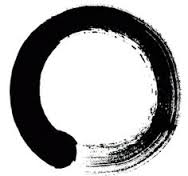
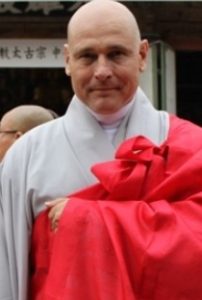
![George%20Walking%20Bear%202[1]](http://www.zenbuddhistorder.com/wp-content/uploads/2015/03/George-Walking-Bear-21-300x242.jpg)
